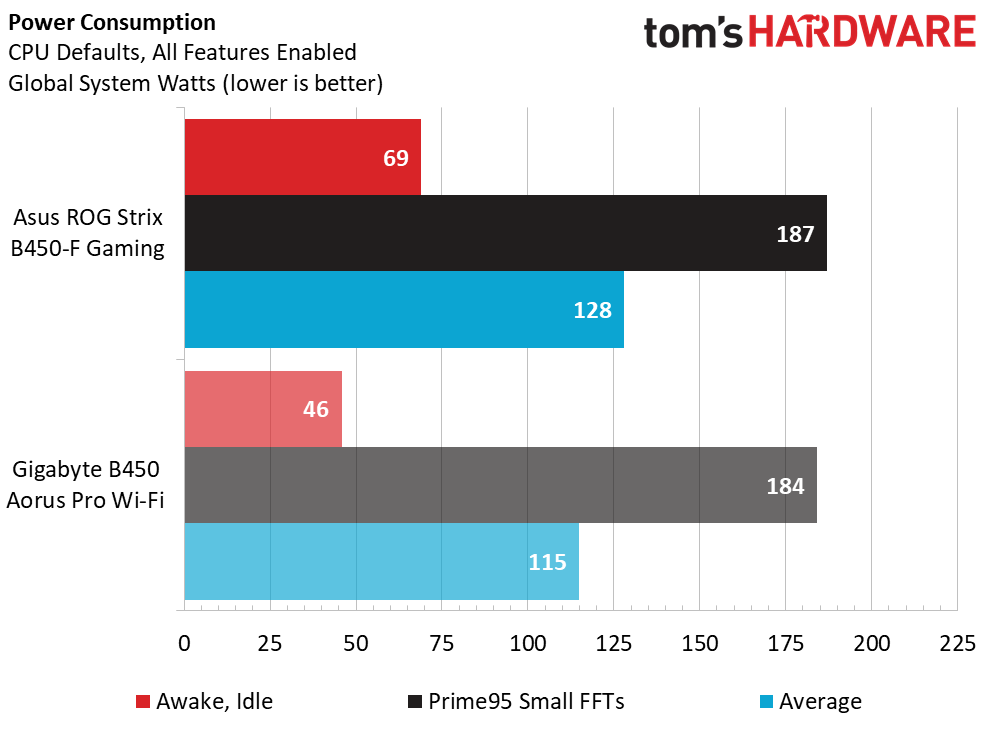Asus ROG Strix B450-F Gaming Motherboard Review: Premium Looks, Budget Price
Why you can trust Tom's Hardware
Benchmark Results and Final Analysis
All standard benchmarks and power tests are performed using the CPU’s stock frequencies (including stock AMD Turbo), with all of its power-saving features enabled. We use the XMP setting as most will do so and not tweak manually. Since XMP is an Intel feature, not all boards will read it properly and may set different timings. But most people will likely set DOCP/XMP and forget it, so that’s the way we test. In this case, setting DOCP ran our sticks at 16-17-17-39 instead of 15-17-17-39 the Gigabyte board ran them at.
Synthetic Benchmarks
Synthetics are a great tool to figure out if a board is running out of spec, as identical settings should produce extremely similar performance results. Advanced memory timings are the one place where motherboard makers can still optimize for either stability or performance though, and those settings also impact Sandra’s bandwidth-intensive Cryptography tests.


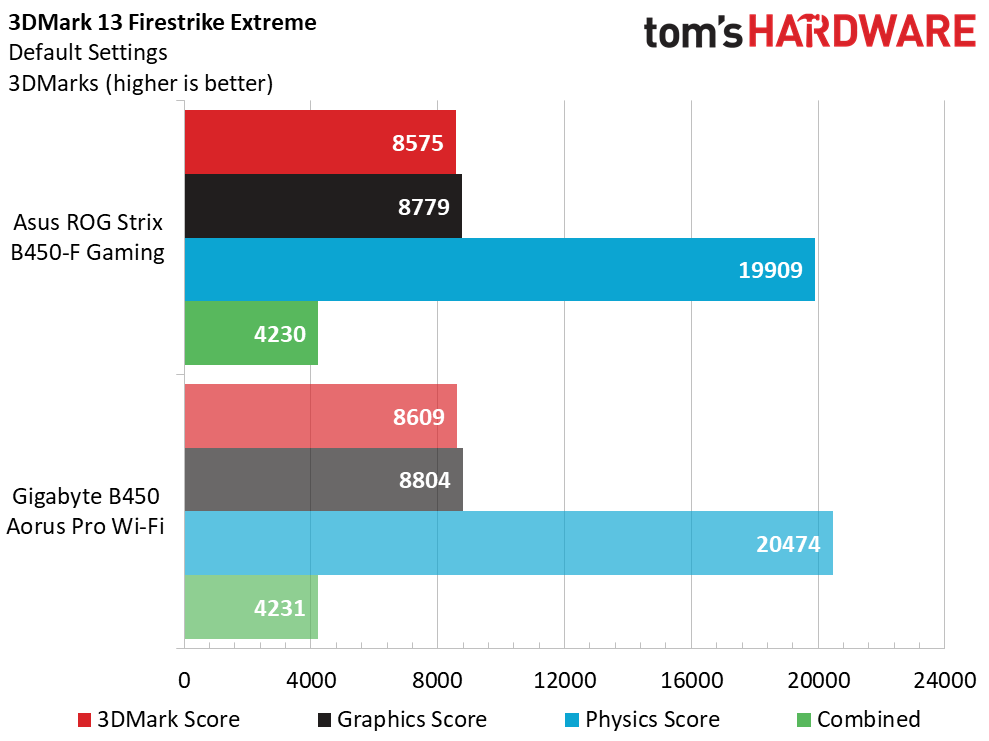
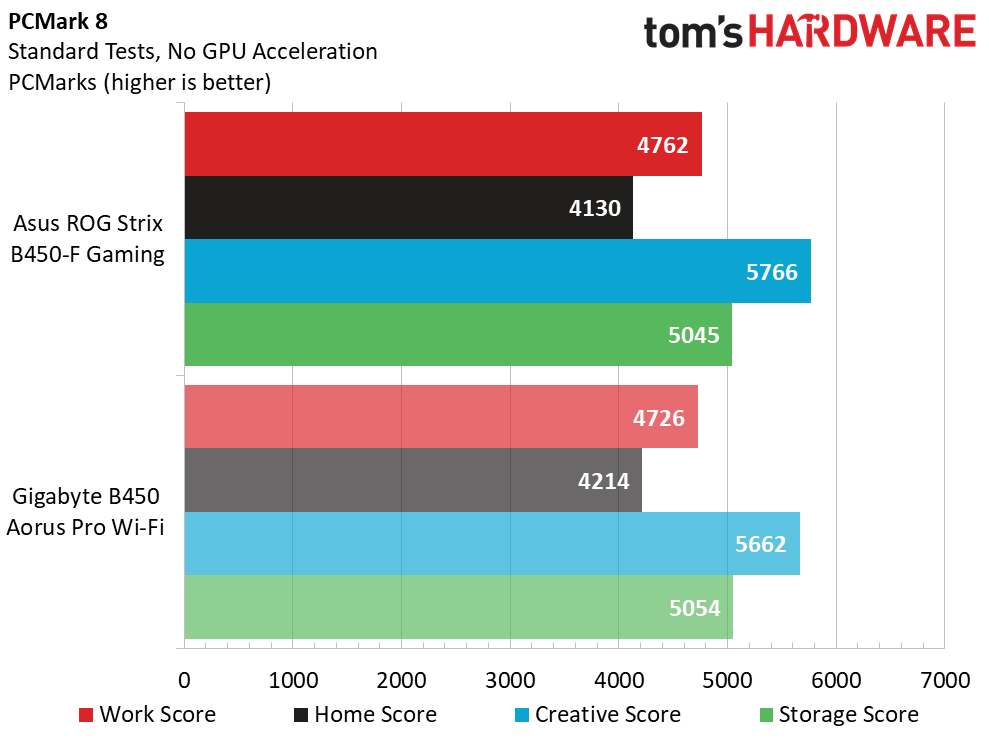
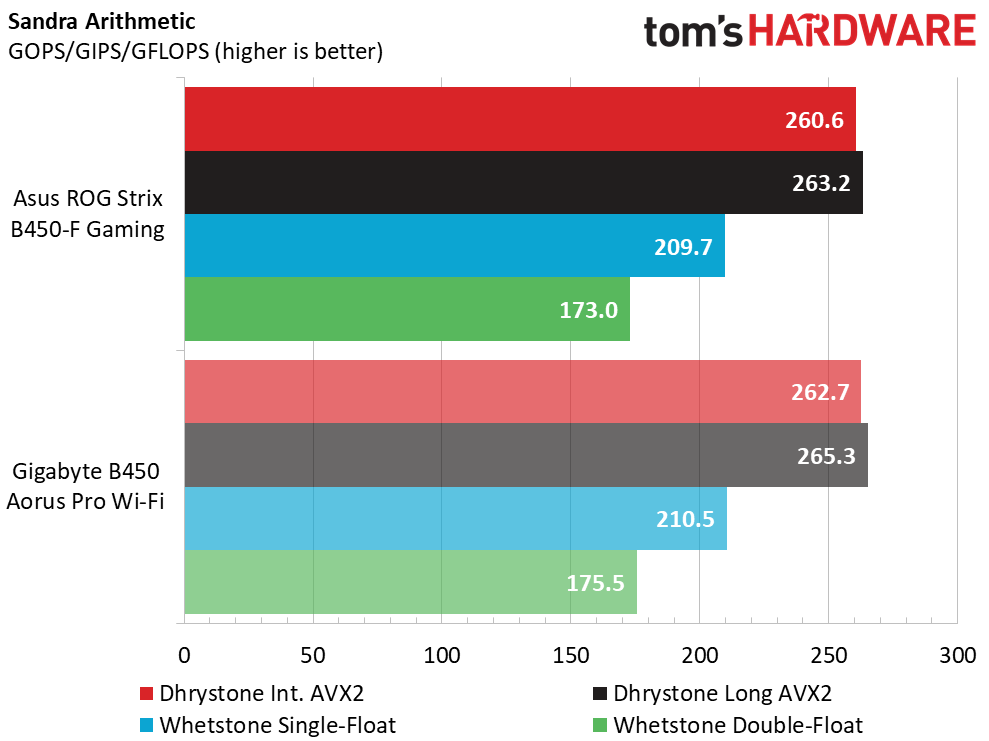
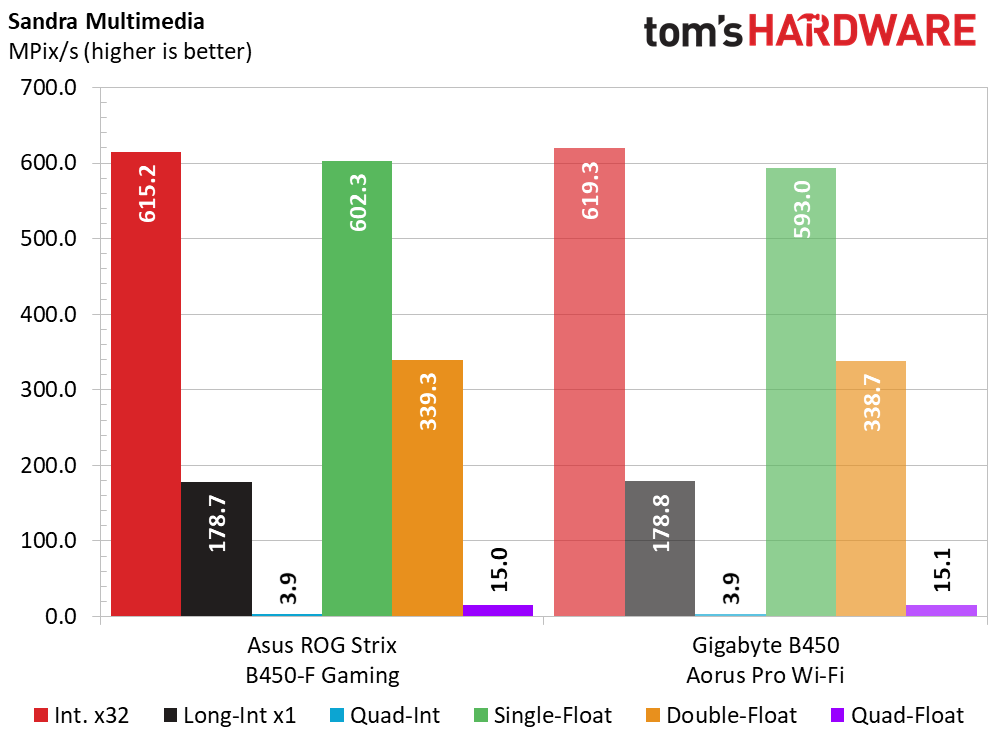
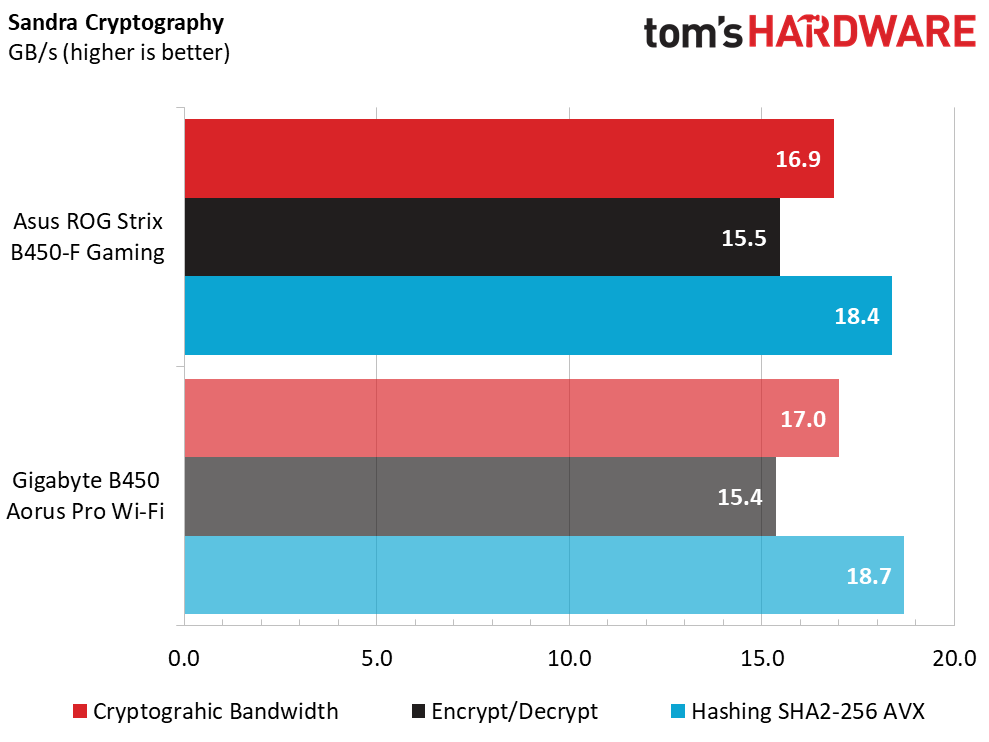
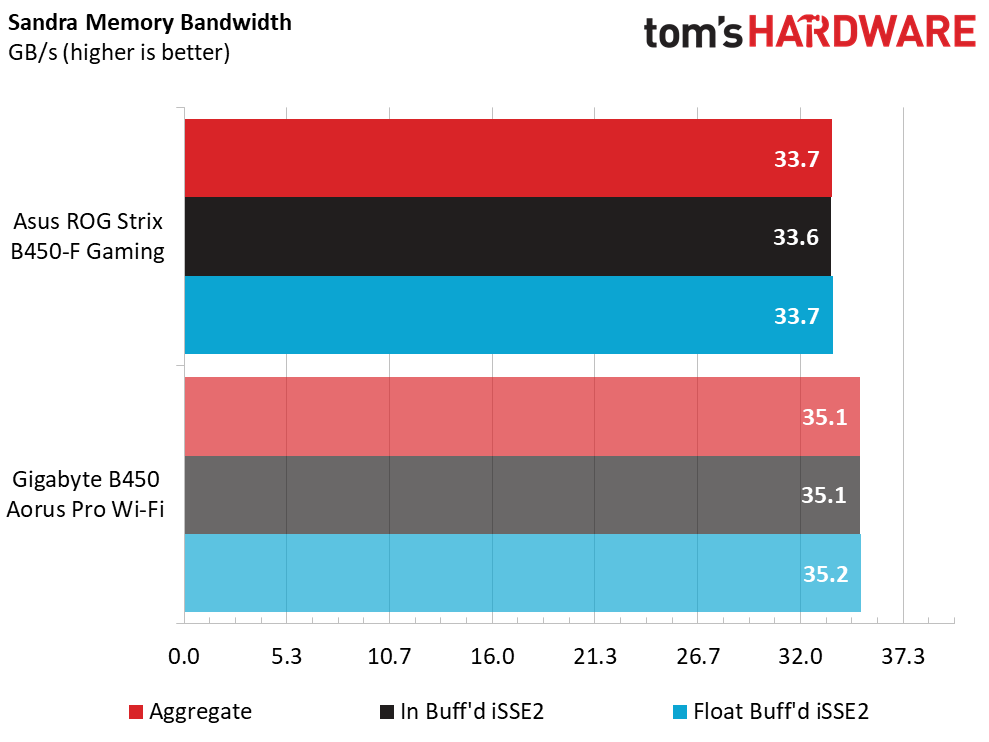
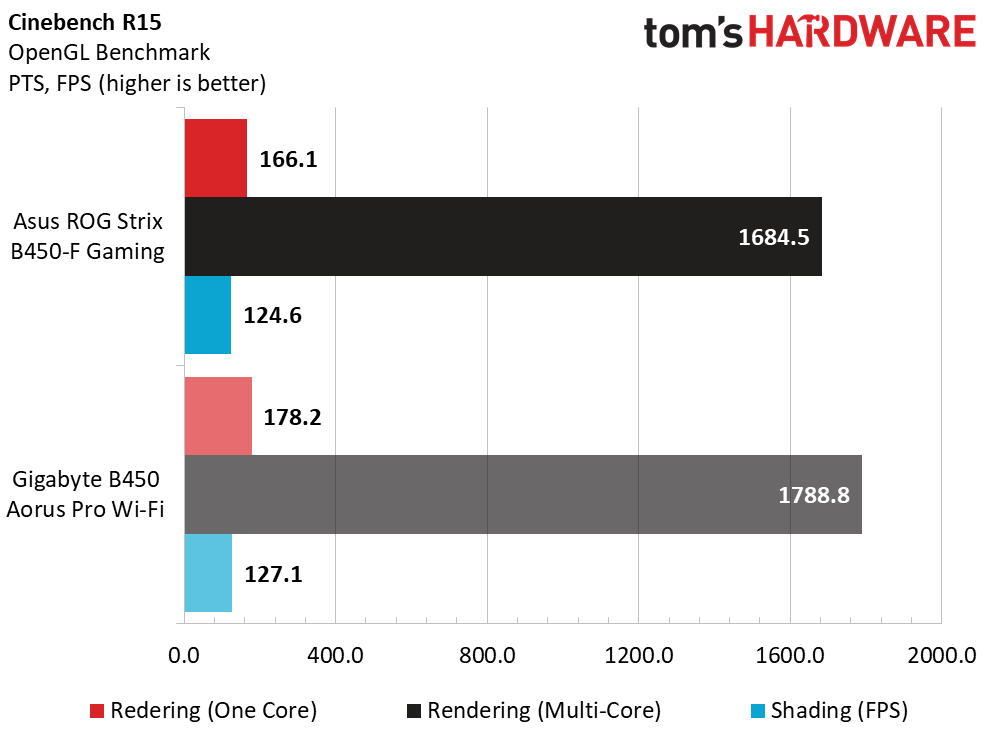
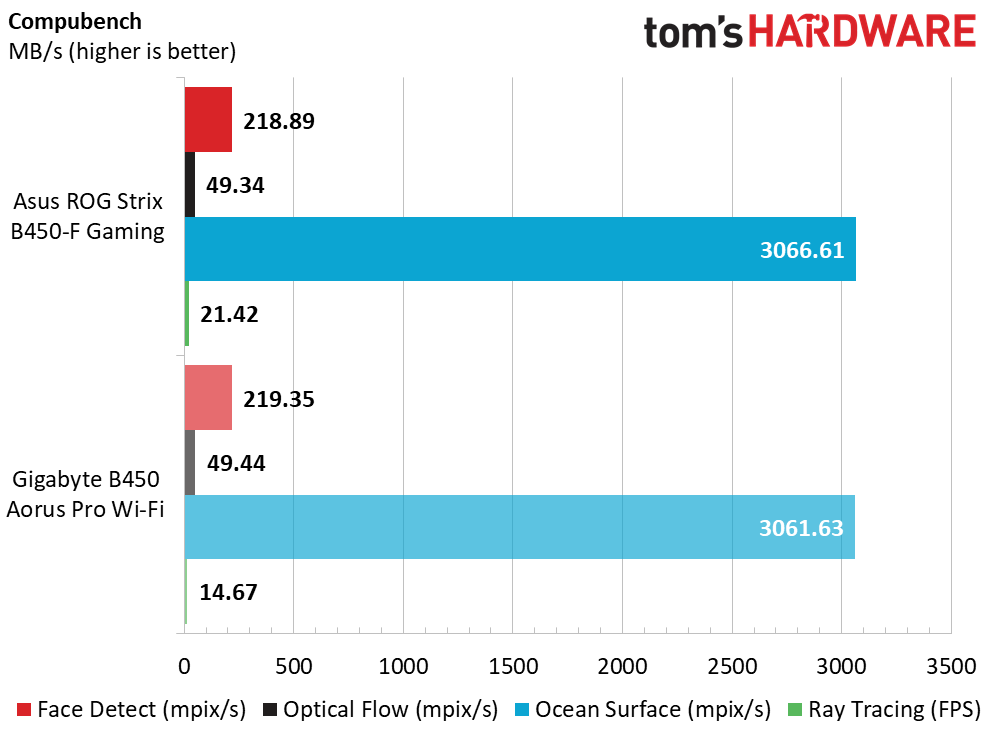
In our synthetic set of tests, the Asus ROG Strix B450-F Gaming performed admirably, trading blows with the Gigabyte B450 Aorus Pro Wi-Fi. All results were within general run variance difference, with no anomalous results.
3D Games
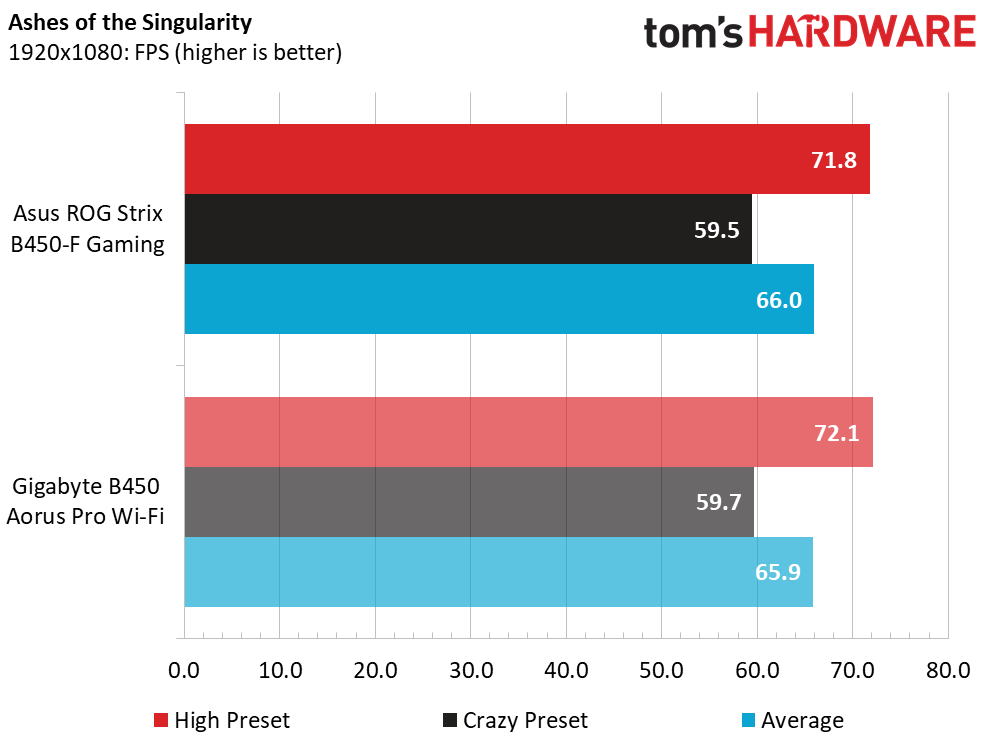



Checking in on the games, here we also see parity among the two boards tested. We don’t find an appreciable difference here either.
Timed Applications
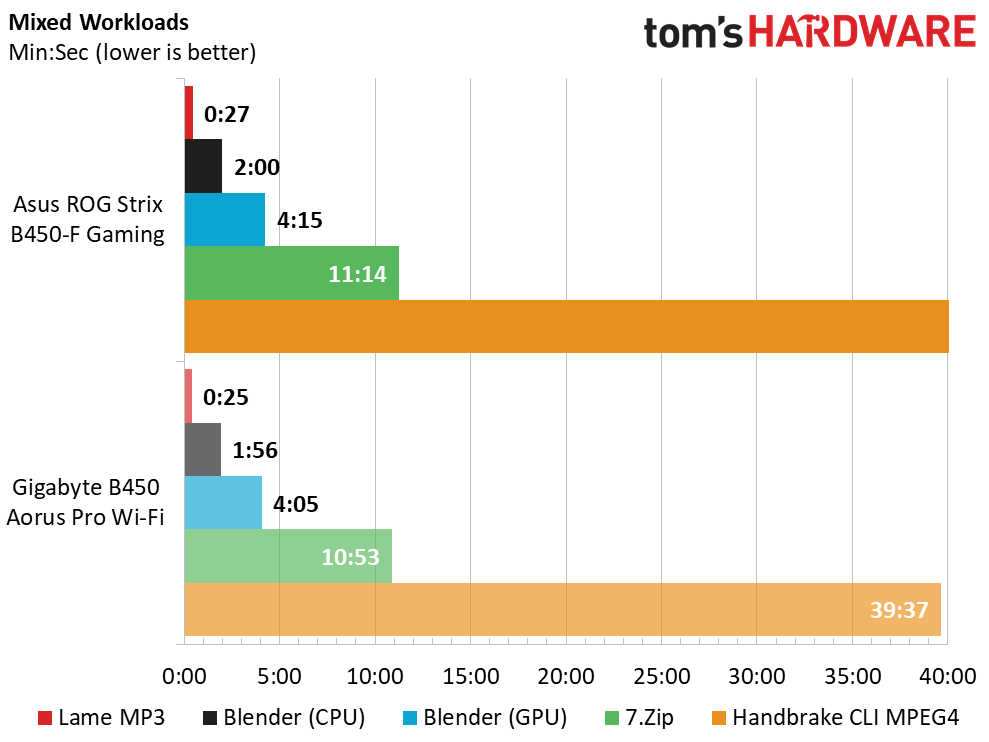
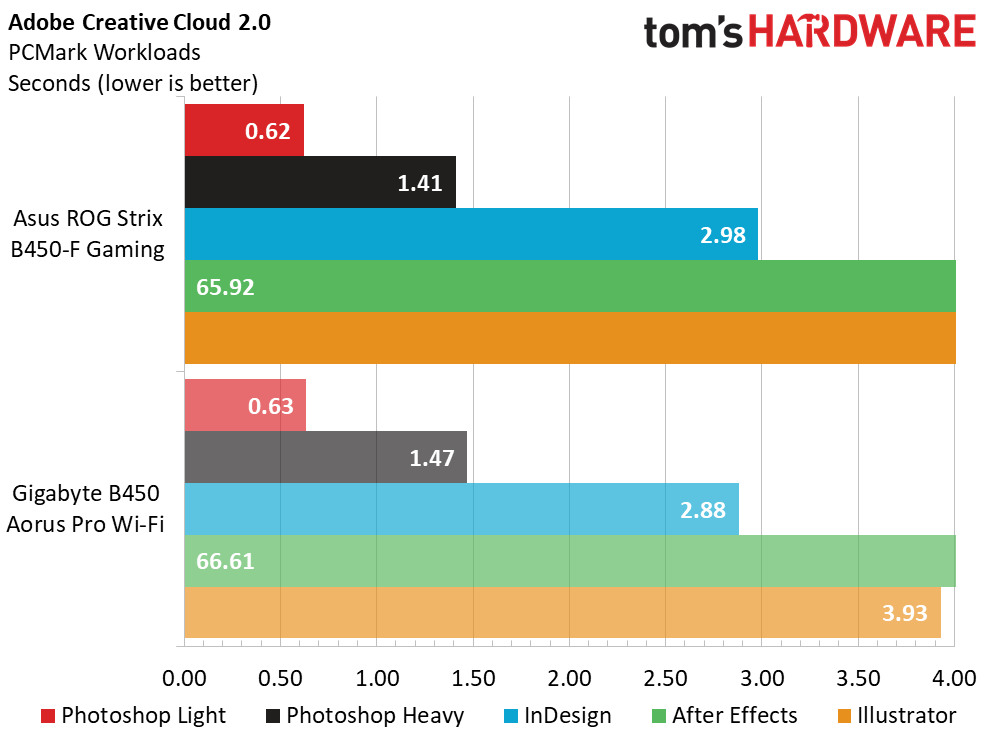
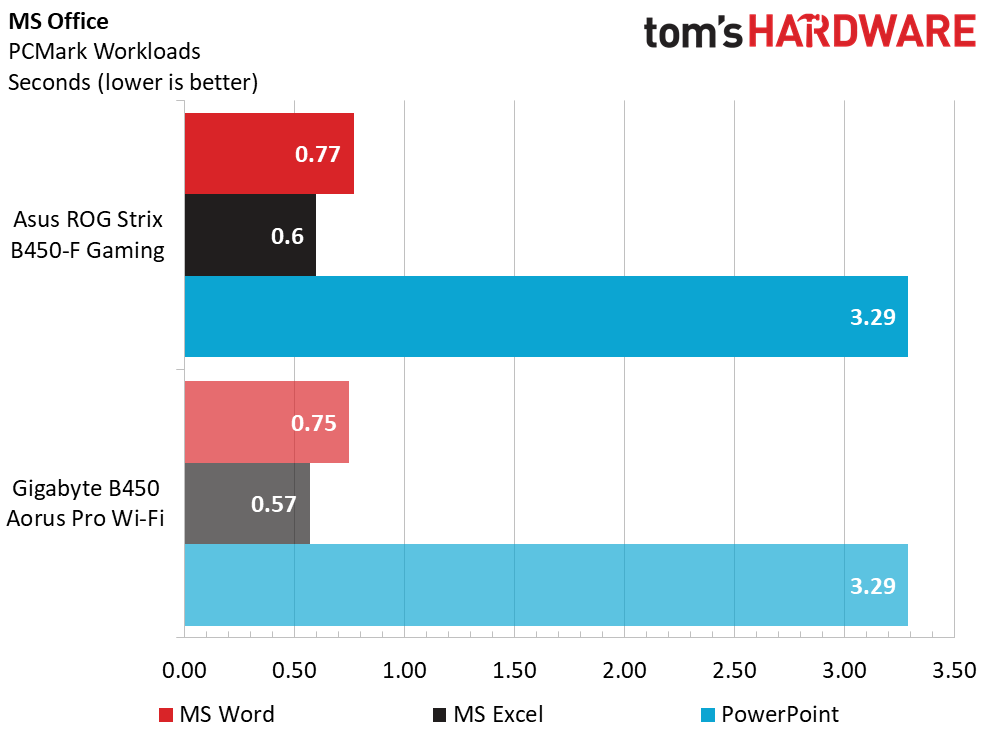
In our timed applications, we saw slight differences between the Asus board and Gigabyte in our Mixed Workloads section, where the Asus was just a bit slower overall. Thinking this could be due to the memory difference, we re-ran with the matching primary timings and received similar results. The rest of the tests showed results that were very close together, within a margin of error on the benchmarks.
Overall Performance
Looking at the graph above, we should be able to deduce that outside of the mixed workload section, the results were within 1% of each other or no noticeable difference. The mixed workload result is the only set of tests which showed more than a negligible difference, averaging 2% slower than the Gigabyte board. That’s a measurable difference, but almost certainly not a noticeable one.
Power and Heat
In this chart, we can see the Asus ROG Strix compares well under load to the Gigabyte board, peaking at 187W (at the wall) for the entire system, while the Gigabyte used 184W. At idle, default settings saw the Asus consuming 69W and the Gigabyte using 46W. That’s a substantial difference, so If your PC is sitting there idling most of the time and power use is a concern, in this case, stick to the Gigabyte board.
Get Tom's Hardware's best news and in-depth reviews, straight to your inbox.
Final Thoughts
Wrapping things up, the Asus ROG Strix B450-F Gaming gives users a lot of features for its $120 price point. The B450 chipset allows for overclocking, and we were able to take our 2700X up to 4.2 GHz using 1.35V using AIDA64 stress tests. The board handled the overclock and running our memory without issue, though the DOCP setting didn’t quite set the memory to the XMP profile and lowered the CL rating one notch, with the rest of the primary timings the same.
The B450-F Gaming comes with the standard SATA port allotment, dual M.2 slots, and plenty of USB ports, including a USB Type-C port (running 3.1 Gen 1 speeds). The pre-mounted IO shield is a great value-add and gives the board a more premium look and feel. The primary difference between this board and the Gigabyte B450 Aorus Pro Wi-Fi we tested against is the latter includes a Wi-Fi adapter where this Asus does not. The Gigabyte board also used less power at idle in our tests.
Overall, the Asus ROG Strix B450-F Gaming is a more-than-capable mainstream offering with a variety of pleasing features for its $120 price. For most, it’s a good motherboard to build Ryzen system around, while saving some cash versus the X470 version, which can be spent on better graphics or roomier, faster storage. So long as Wi-Fi isn’t part of your build requirement, the B450-F Gaming makes for a solid choice as the basis for your next Ryzen build.
Image Credits: Tom's Hardware
MORE: Best Motherboards
MORE: How To Choose A Motherboard
MORE: All Motherboard Content

Joe Shields is a staff writer at Tom’s Hardware. He reviews motherboards and PC components.

